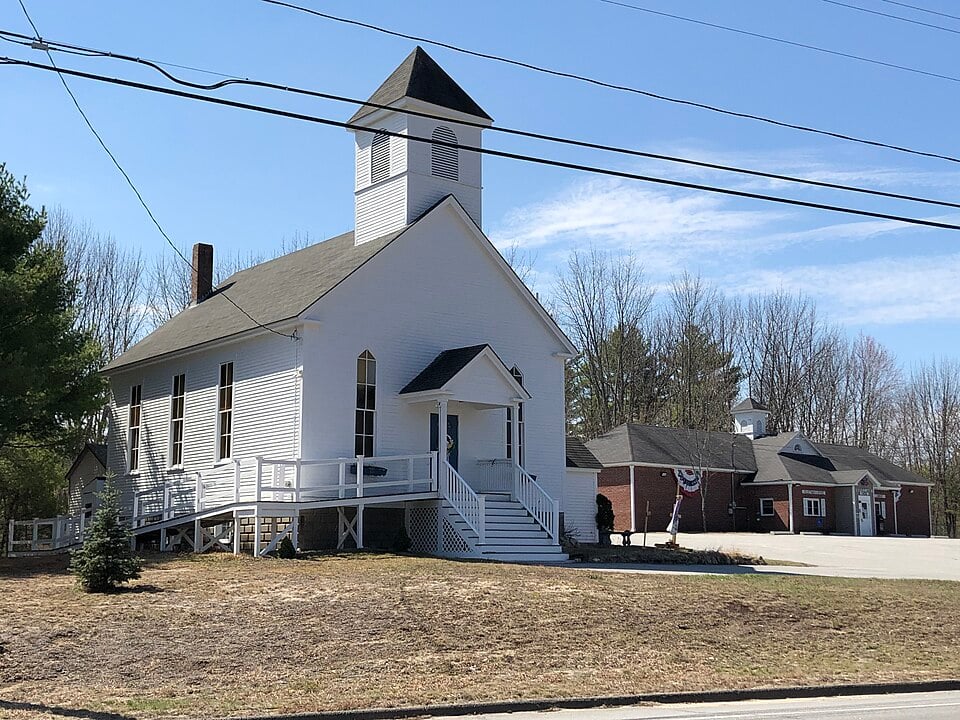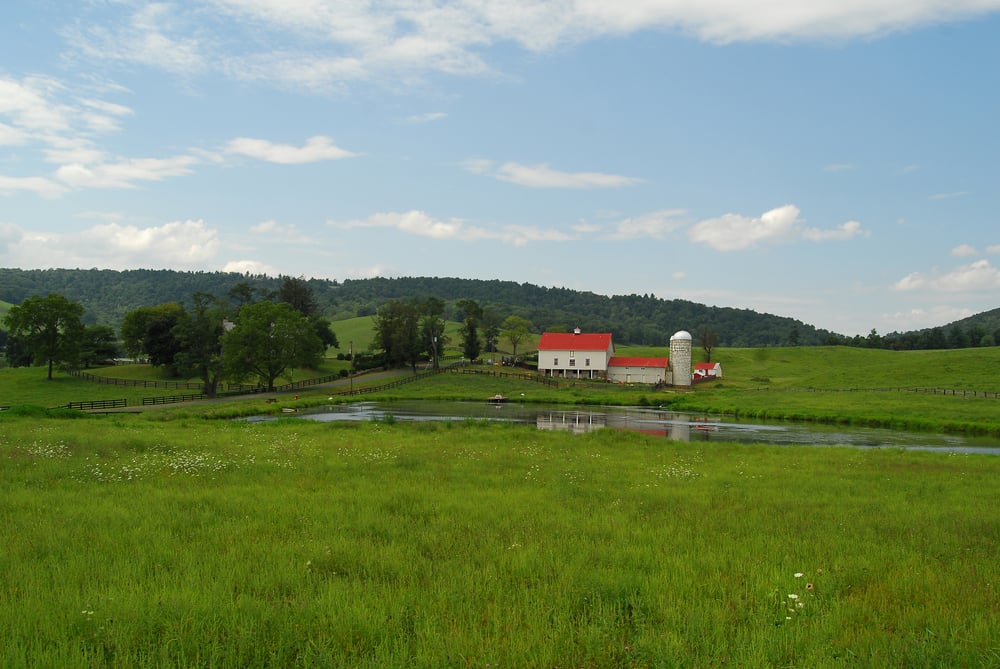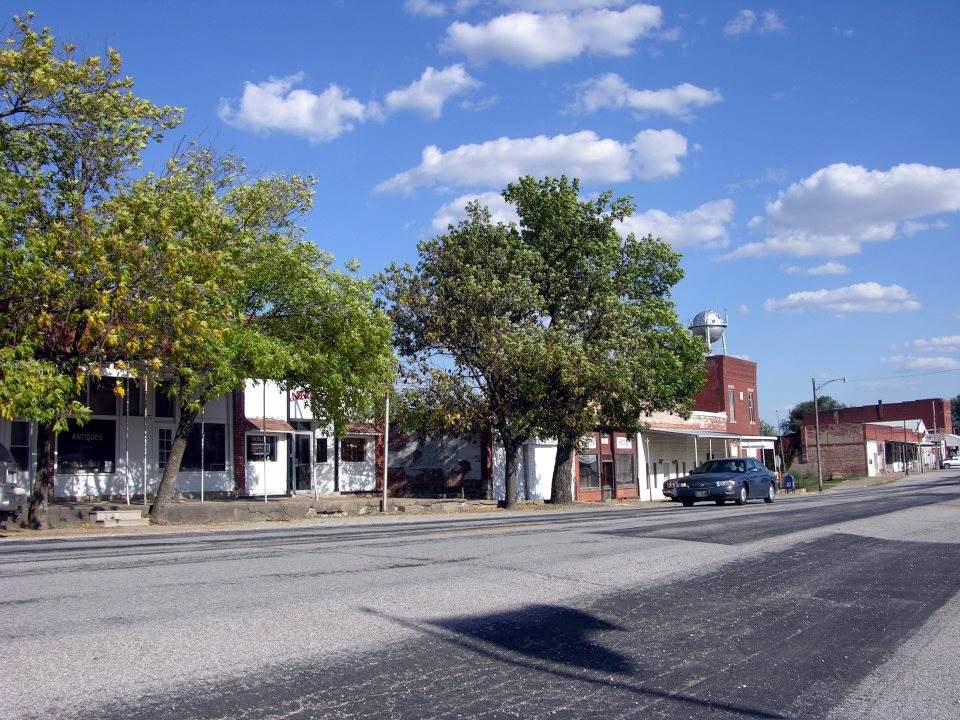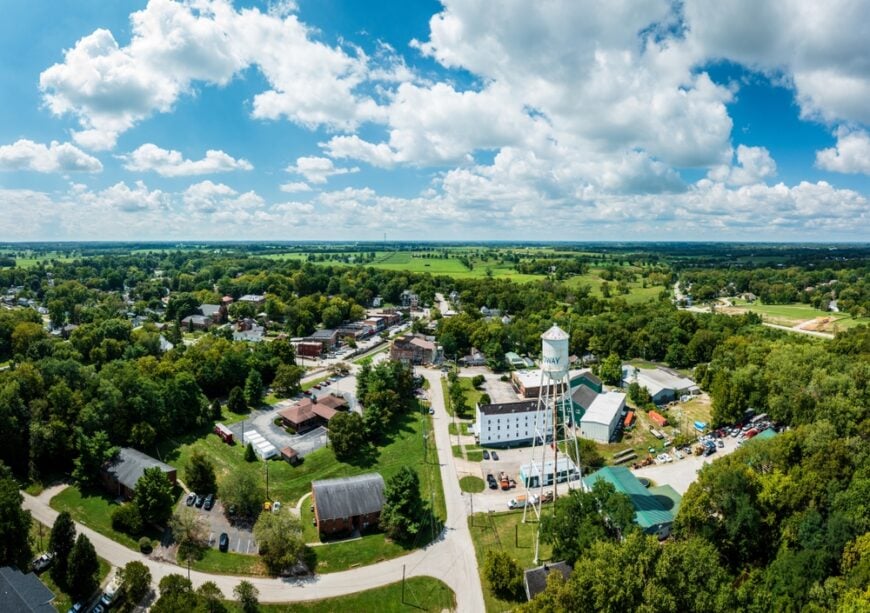
Kentucky’s small towns are the heart of bourbon country, where history and the rich aroma of aging oak fill the air. Each town pairs a storied past with a welcoming atmosphere, featuring tasting rooms in century-old barns, museums celebrating frontier spirit, and locals eager to share a pour on the porch.
These towns aren’t just about sipping whiskey; they are about exploring the history behind it, from rail lines that once carried barrels to battlefields that shaped the nation.
Whether along rivers or in rail-era hamlets, Kentucky’s bourbon spirit flows through every corner, offering more than just a drink. It’s a taste of tradition. So grab your notebook and empty trunk. By the end of this list, you will have plenty of souvenirs to take home.
16. Perryville: Battlefield History and Bourbon Heritage
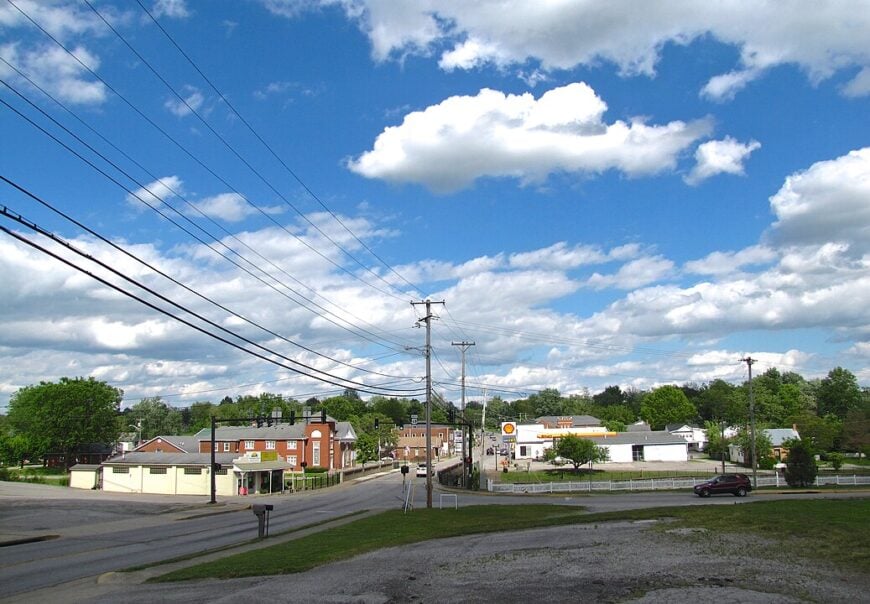
Perryville might be best known for its pivotal Civil War battlefield, yet I’ve found its quiet downtown equally compelling for bourbon lovers seeking off-the-radar experiences.
After touring the preserved fields where cannons once thundered, I like ducking into the historic Karrick-Parks House, which often hosts intimate tasting events spotlighting up-and-coming craft labels.
Local cafes pour limited-release bottles from Wilderness Trail and Peerless, turning an afternoon coffee stop into an impromptu sampling session. Antique hunters should check Elmwood Inn Fine Teas’ retail shop, a Victorian gem where small-batch barrel-finished teas marry Kentucky flavors with global leaves.
Each October, the town’s Commemoration Weekend pairs battlefield reenactments with a pop-up bourbon bar that feels like a time warp in the best way. For travelers chasing the intersection of American history and Kentucky spirit, Perryville offers a chapter few folks have read.
In Perryville, you can expect to pay between $250,000 and $400,000 for a charming 3-4 bedroom home, making it an appealing choice for those looking to settle in this historic town.
Where is Perryville?
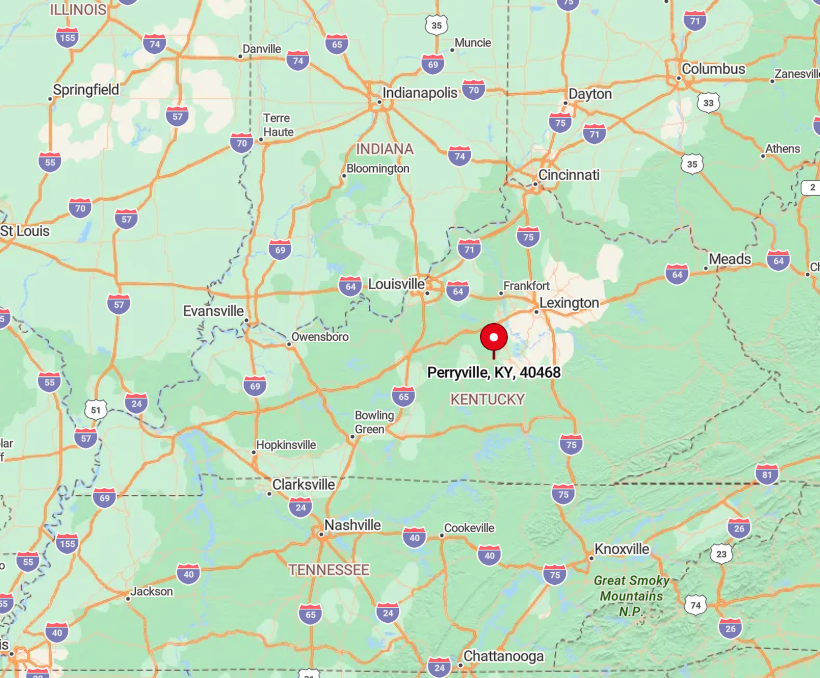
Perryville sits in Boyle County, roughly ten miles west of Danville in central Kentucky’s Bluegrass region. Its position along the Chaplin River gave 19th-century distillers access to limestone-filtered water, a detail you’ll still hear local historians mention with pride.
U.S. Route 150 brings you straight into town, and I usually pair the trip with a leisurely drive down KY-68 to admire rolling farmland that hasn’t changed much since the 1800s. The nearest airport is Lexington’s Blue Grass Airport, about an hour northeast, making Perryville easy to fold into a longer bourbon trail itinerary.
15. Maysville: Historic Port City with Bourbon Roots
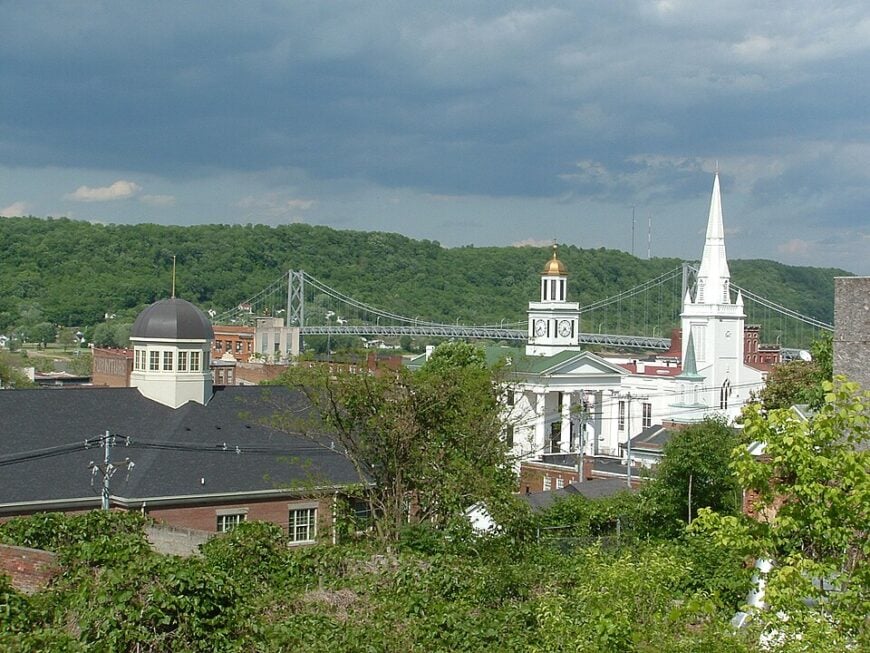
Perched on the Ohio River, Maysville once shipped frontier whiskey northward on flatboats, and that river heritage lingers in every brick warehouse along Front Street.
I always start at Old Pogue Distillery, where fifth-generation family members lead tours ending with a view across the water to Ohio—proof that state lines have never confined bourbon’s reach.
The Kentucky Gateway Museum Center surprises visitors with finely crafted dioramas of early America, including one depicting a 1790s still house that predates many modern brands.
A stroll up Hill Street reveals hidden murals chronicling Rosemary Clooney’s hometown ties and river merchants’ quiet influence on Kentucky’s liquor trade. After dark, the Washington Opera House often hosts bluegrass shows where you can sip a Pogue Old Fashioned from the concession stand—small-town perks at their finest.
Between music, history, and river breezes, Maysville offers a tasting flight of Kentucky culture in one easy pour. Maysville offers a beautiful selection of 3-4 bedroom homes, with prices ranging from $200,000 to $350,000, perfect for families seeking a balance of affordability and history.
Where is Maysville?
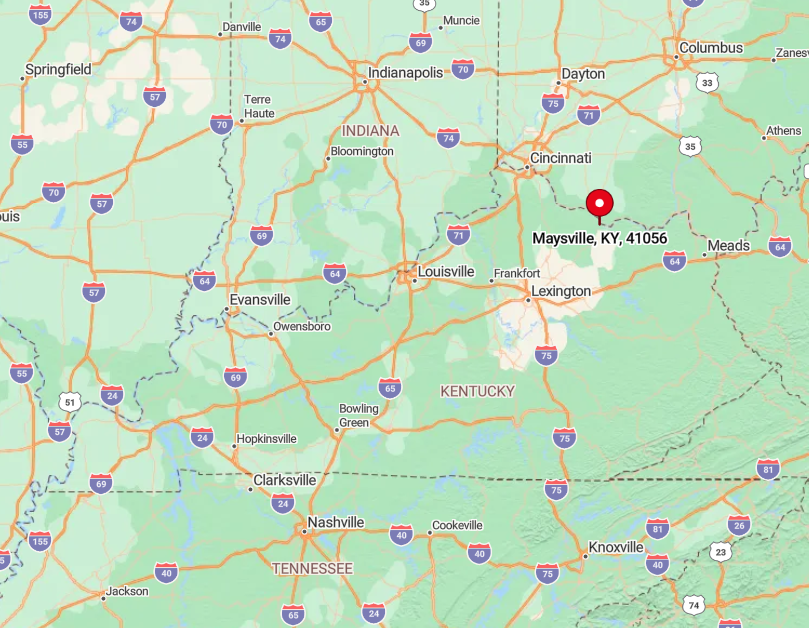
You’ll find Maysville in northeastern Kentucky’s Mason County, about an hour and a half east of Lexington along the scenic AA Highway (KY-9). Its bluff-top streets overlook the Ohio River, a waterway that once served as the bourbon highway to northern markets.
I typically reach town via U.S. 68, a drive winds through tobacco barns and limestone rock cuts before revealing the city’s iconic suspension bridge. If you arrive by air, Cincinnati/Northern Kentucky International Airport lies just over an hour northwest, making Maysville a convenient first or last stop on any bourbon road trip.
14. Midway: Historic Railroad Town with Bourbon Appeal
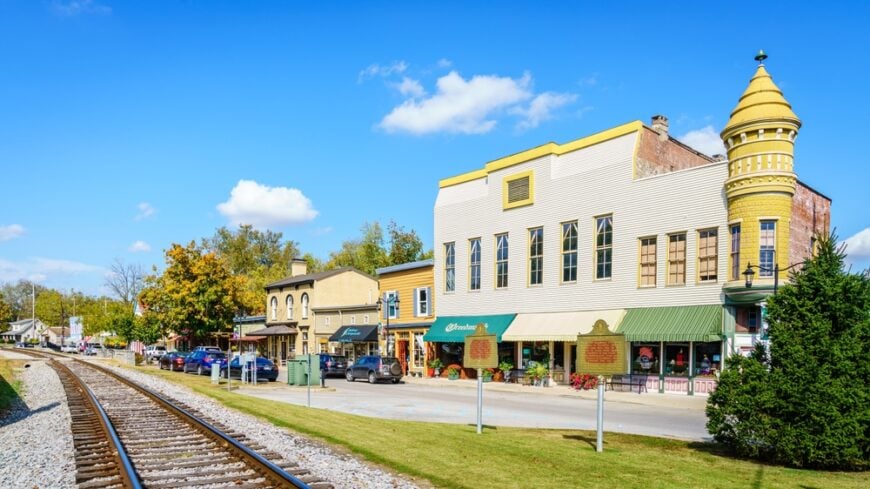
Midway earned its name because the Lexington and Ohio Railroad split the distance between two major cities, and the tracks still run straight down Main Street, sometimes delaying traffic just long enough for me to finish a scoop of Railroad Row bourbon ice cream from Sav’s Chill.
Bluegrass Distillers operates a satellite aging campus here, inviting visitors to taste samples from experimental barrels you won’t taste elsewhere. Five minutes outside town, the historic Weisenberger Mill sells stone-ground grits prized by local mash bills for small-batch whiskey.
After touring, I wander to Equus Run Vineyards for live music in a meadow resembling a painting of the Bluegrass. Midway’s boutique shops, housed in 19th-century brick storefronts, carry charred-oak cutting boards and bourbon-scented candles—souvenirs that won’t shatter in your suitcase.
The town is proof that good things happen when railroads and rickhouses share the same zip code. With its quaint, picturesque streets, Midway’s 3-4 bedroom homes are priced between $250,000 and $400,000, ideal for those looking to enjoy the town’s unique atmosphere.
Where is Midway?
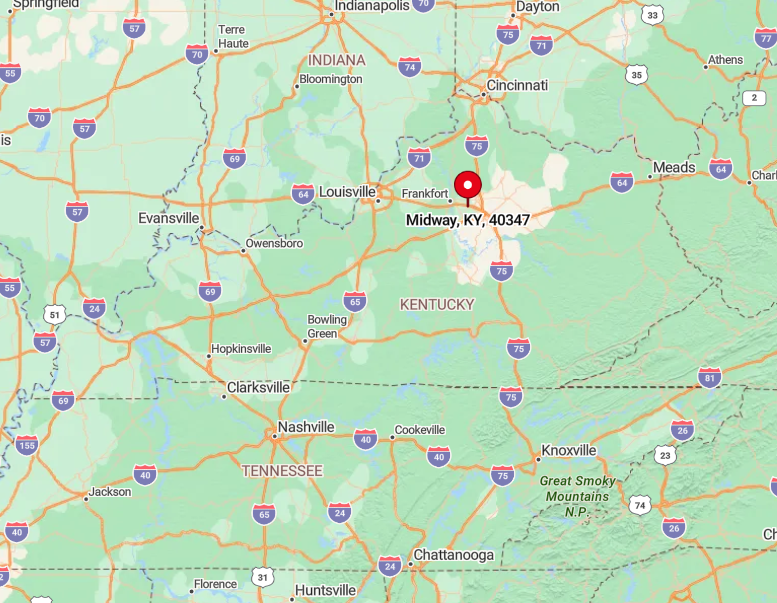
Midway rests in Woodford County, just off I-64 between Lexington and Frankfort, making it one of the easiest stops to tack onto a central Kentucky itinerary. Nestled among horse farms and stone fences, the town provides a postcard view of the state’s famed limestone shelf that filters spring water and stallion legs.
I usually exit at KY-341, then amble along Old Frankfort Pike, considered one of America’s most beautiful drives. Blue Grass Airport sits fifteen minutes away, but the slow roll through farm country is half the reward.
13. Lebanon Junction: Small Town with a Big Bourbon Heart
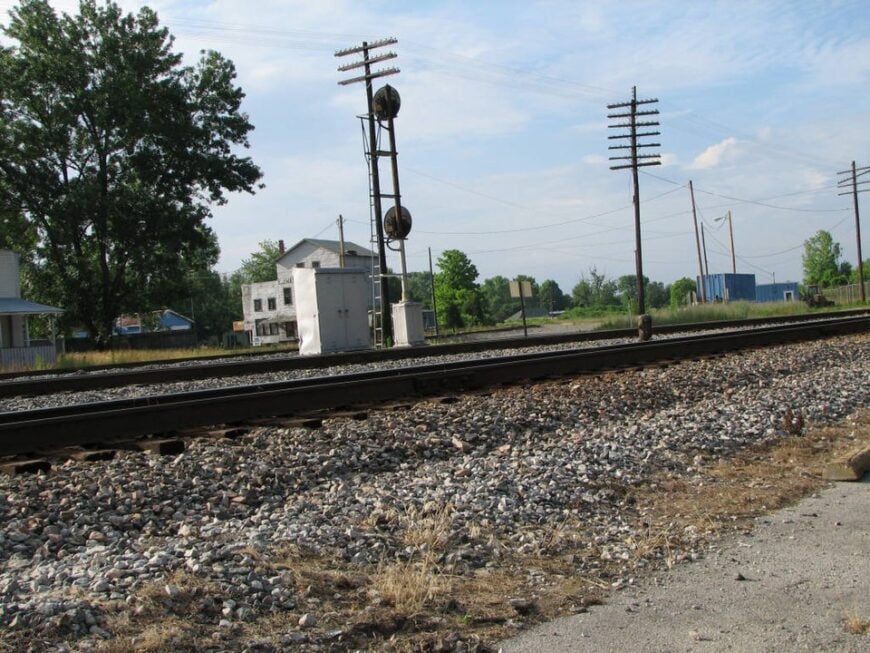
Lebanon Junction grew up where rail lines crossed the Rolling Fork River, and today that crossroad spirit fuels a surprising bourbon scene for a town of fewer than 2,500 residents. I like to start at Whiskey Thief Distilling, where guests dip their thief into barrels aging in an open-air rickhouse—a hands-on treat rarely offered elsewhere.
Downtown’s Bullitt County History Museum displays artifacts from defunct 19th-century distilleries, a reminder that Kentucky’s “new” craft boom often revives forgotten labels. For lunch, I duck into The Shack in the Back, a barbecue joint with a secret bourbon slushie menu locals whisper about on hot days.
The Junction Jamboree lines Main Street twice a year with food trucks and a mobile cocktail bar serving single-barrel selections from Jim Beam’s nearby Clermont campus.
Lebanon Junction shows how a tiny town can punch well above its weight in a state full of bourbon giants. In Lebanon Junction, a 3-4 bedroom home can be yours for anywhere from $200,000 to $350,000, offering great value in a town known for its scenic charm.
Where is Lebanon Junction?
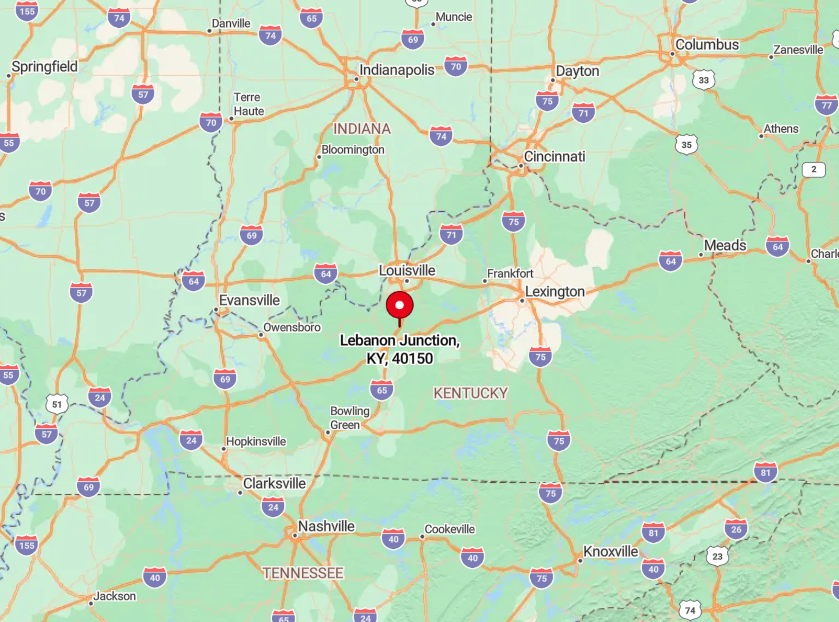
Situated in southern Bullitt County, Lebanon Junction hugs I-65 about thirty minutes south of Louisville, making it an effortless detour between big-city attractions and rural distilleries. The Rolling Fork River curves around the town, once powering mills that supplied grist for early mash bills.
If you’re already touring Jim Beam in Clermont, a quick ten-minute hop down KY-61 lands you here for barrel thieving or river kayaking. Louisville Muhammad Ali International Airport is the nearest hub, but most visitors prefer the relaxed drive straight down the interstate.
12. Shelbyville: Saddlebreds and Fine Spirits
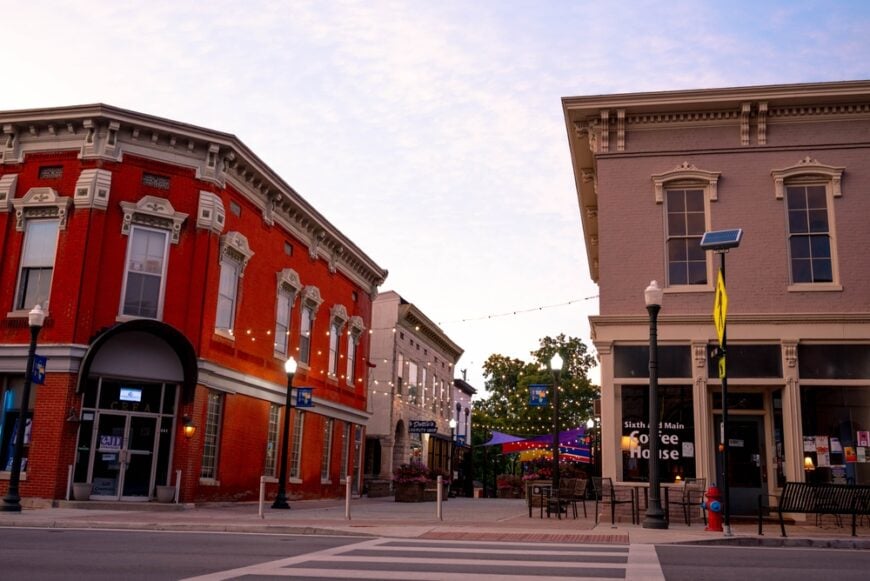
Shelbyville claims the title of American Saddlebred Capital, and I love pairing a morning stable tour with an afternoon tasting at Jeptha Creed Distillery, where heirloom Bloody Butcher corn gives their bourbon a distinctive nutty finish.
Downtown’s Wakefield-Scearce Galleries, housed in a 1909 girls’ school, sells English antiques alongside a bourbon bar tucked behind a secret door—ask the clerk, and you might earn an invite.
Each summer, the Shelbyville Horse Show adds pop-up bourbon lounges beneath the grandstand, offering juleps balanced with local sorghum syrup. When hunger strikes, The Bell House serves bourbon-braised short ribs in a restored 1911 home that feels like dining inside a living postcard.
For a deeper dive, the Shelby County Historical Society curates rotating exhibits on long-lost distilleries such as Crooked Creek, once the toast of pre-Prohibition Kentucky.
In short, Shelbyville marries equine grace with grain-to-glass craftsmanship in effortless style. Shelbyville’s 3-4 bedroom homes are typically priced between $300,000 and $450,000, reflecting its blend of history and modern amenities.
Where is Shelbyville?
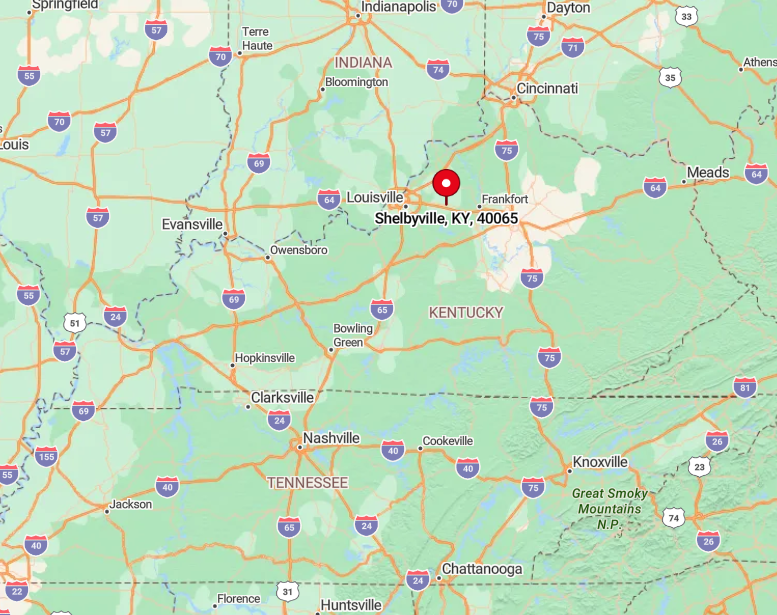
You’ll find Shelbyville halfway between Louisville and Frankfort along I-64, which means you can chase distillery tours with big-city dining in under thirty minutes in either direction. The Salt River meanders just south of town, lending mineral-rich water prized by early distillers and modern brewers alike.
I often exit at KY-53, then follow the “Saddlebred Trail” signs that wind past manicured horse farms before dropping into downtown. Louisville’s airport sits twenty-five minutes west if you’re flying in, but the pastoral drive is part of Shelbyville’s charm.
11. New Haven: Rails, History, and Bourbon Tales
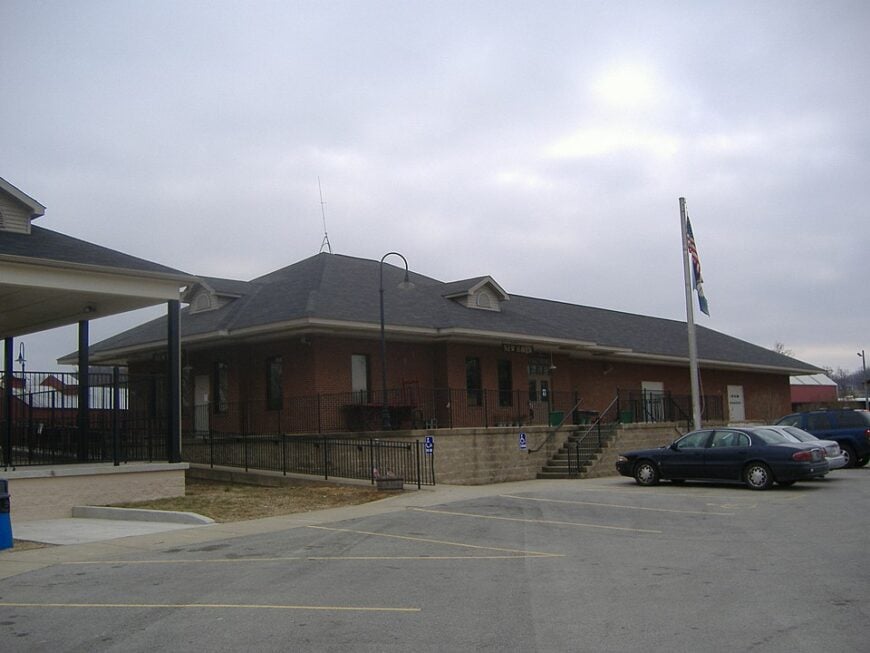
New Haven’s claim to fame is the Kentucky Railway Museum, where vintage locomotives whistle past cornfields that still feed nearby distilleries. I always time my visit to catch the “Train & Bourbon” excursion featuring onboard tastings.
Just up the road, Log Still Distillery at Dant Crossing has turned a dormant campus into a multifunction bourbon village with a serene lake, amphitheater concerts, and a restored 1911 train depot bar.
The town’s tiny Main Street hides Mama Linda’s, a diner whose bread-pudding dessert arrives drizzled with house-infused bourbon caramel, worth every calorie. Photography buffs should swing by the 1880 Rolling Fork River Bridge, especially at sunset when its iron trusses mirror in the water like a sepia postcard.
Between steam engines and small-batch spirits, New Haven proves that heritage and innovation ride the same track. New Haven provides a variety of 3-4 bedroom homes, with prices ranging from $200,000 to $350,000, making it an excellent option for those exploring the area’s bourbon heritage.
Where is New Haven?
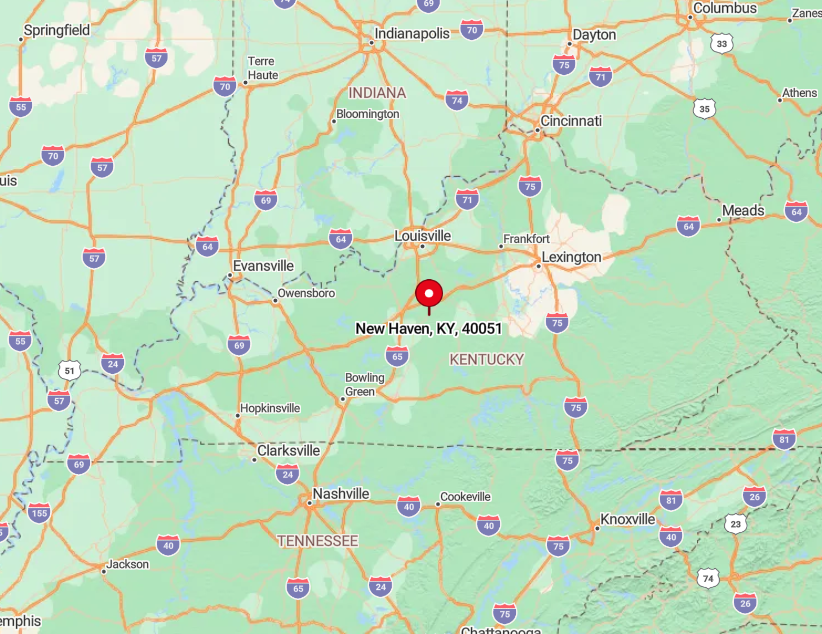
New Haven sits in Nelson County on U.S. 31E, roughly fifteen minutes south of Bardstown and an hour south of Louisville. The town straddles the Rolling Fork River, allowing distillers access to that prized limestone water.
I generally follow KY-52 through clusters of knob hills and tobacco barns, a drive that feels like traveling back in time. Visitors flying into Louisville can reach New Haven in about an hour via I-65 and exit 112, making it an easy day trip.
10. Paris: Historic Elegance in Bourbon Country
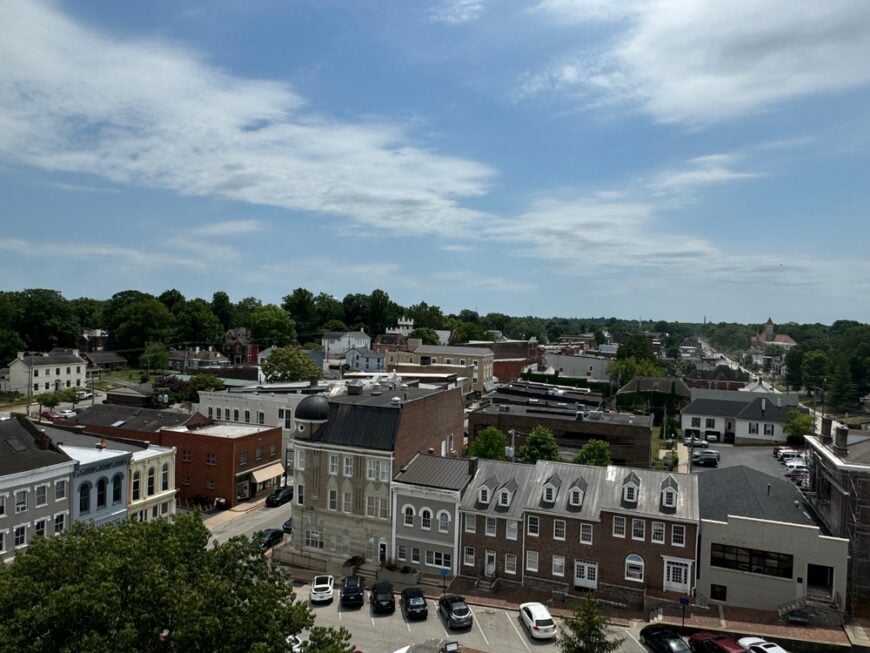
Paris greets travelers with a cast-iron Eiffel Tower replica, yet the town’s Gilded Age mansions and fieldstone fences keep me lingering. Hartfield & Co. Distillery, the first post-Prohibition bourbon maker in Bourbon County, offers a grain-to-glass tour that ends with a tasting inside an 1860s storefront—talk about full-circle history.
Afterward, I like wandering to Hopewell Museum, where rotating exhibits detail how the county’s namesake spirit financed everything from turnpikes to textile mills. Bourbon-themed murals dot the courthouse square, including a newly unveiled piece honoring the county’s once-forgotten African American distillers.
At Cane Ridge Meeting House, the oldest surviving church west of the Alleghenies, you’ll find plaques referencing early communion whiskey distillations—a curious slice of frontier faith.
With its French charm and Kentucky grit blend, Paris turns every corner into a conversation starter. Paris boasts a collection of 3-4 bedroom homes priced from $250,000 to $400,000, allowing homebuyers to experience its rich historical charm.
Where is Paris?
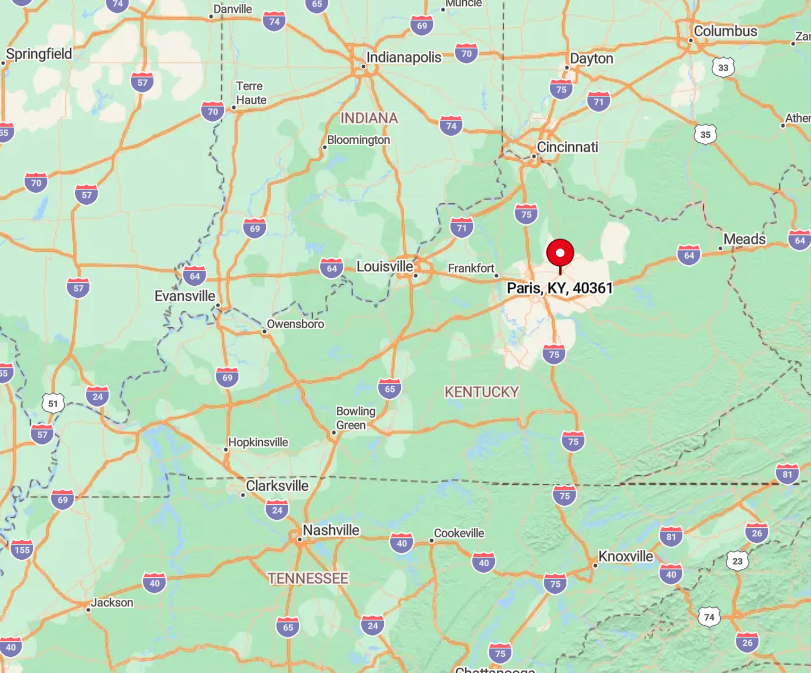
Paris lies eighteen miles northeast of Lexington along U.S. 27, squarely within the rolling pastures of Bourbon County. The Stoner Creek valley funnels cool morning mists across nearby rickhouses, a microclimate some distillers swear accelerates maturation.
I prefer the scenic route via Paris Pike (U.S. 68), where stone walls and massive oaks line the roadway like sentries. Blue Grass Airport is a quick thirty-minute drive, but arriving by car lets you admire the famous Claiborne and Adena Springs horse farms en route.
9. Augusta: Riverside Charm and Craft Distilling
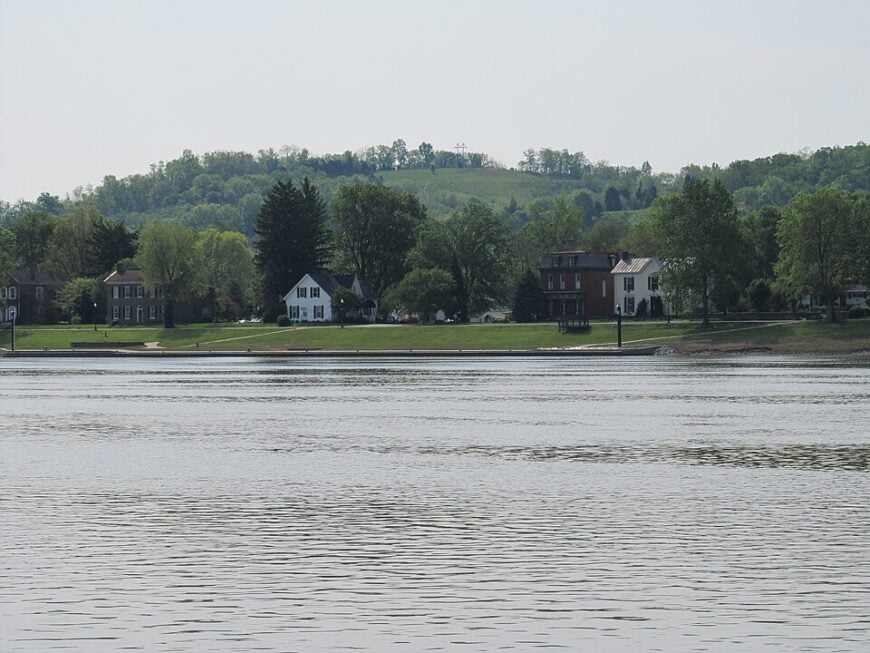
Augusta sits gracefully on the south bank of the Ohio River, and I never tire of watching tugboats drift past while sipping a pour from Augusta Distillery’s riverfront tasting room.
Founded in a former carriage factory, the distillery runs an experimental pot-still program that occasionally releases single-grain expressions you won’t find outside town limits.
Strolling the Victorian district feels like paging through a living history book, especially when you duck into the Baker-Bird Winery, holder of America’s oldest commercial wine cellar—and yes, they finish a port-style beverage in used bourbon barrels.
Film buffs will appreciate the Rosemary Clooney House Museum, where George Clooney’s aunt once practiced her scales before Hollywood beckoned. Each July, the Riverfest Regatta pairs fried-catfish plates with bourbon-slush vendors for a festival that feels straight out of a Mark Twain novel.
Trust me, you’ll leave Augusta with sand on your shoes and a bottle nobody else in your tasting club owns. Augusta offers 3-4 bedroom homes at a price range of $200,000 to $350,000, combining affordability with the picturesque charm of this historic riverside town.
Where is Augusta?
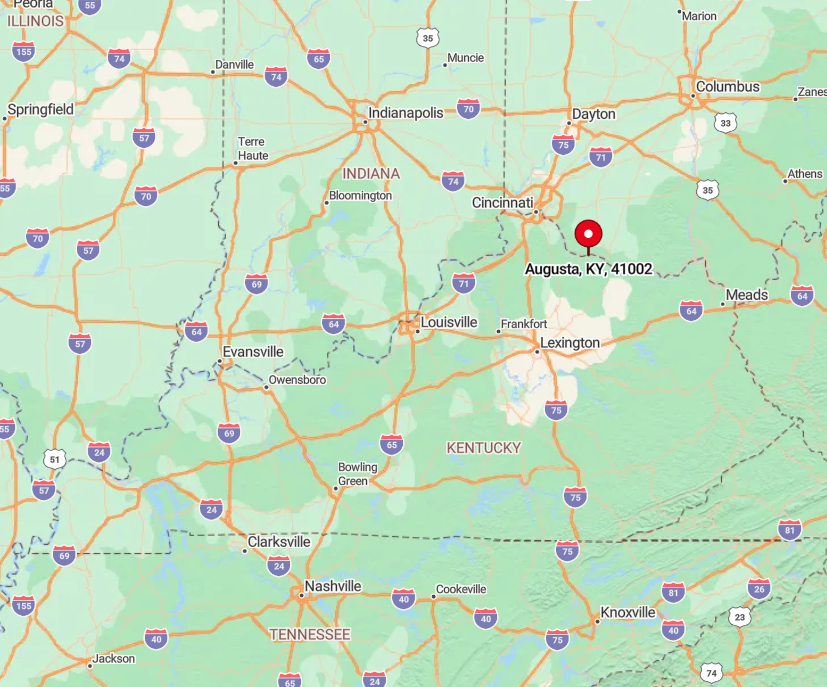
Located in Bracken County, Augusta sits an hour southeast of Cincinnati via the AA Highway and KY-8, hugging a broad curve of the Ohio River. The ferry crossing to Ohio, operating since 1798, remains one of the few left on this stretch of water and adds a nostalgic twist to any road trip.
I usually approach along Route 8, which snakes beside the river under towering sycamores and rock bluffs. If you’re flying, Cincinnati’s airport lies just over an hour northwest, while Lexington’s is ninety minutes south, offering travelers a scenic triangle of options.
8. Harrodsburg: Kentucky’s Oldest Town with Bourbon Flair
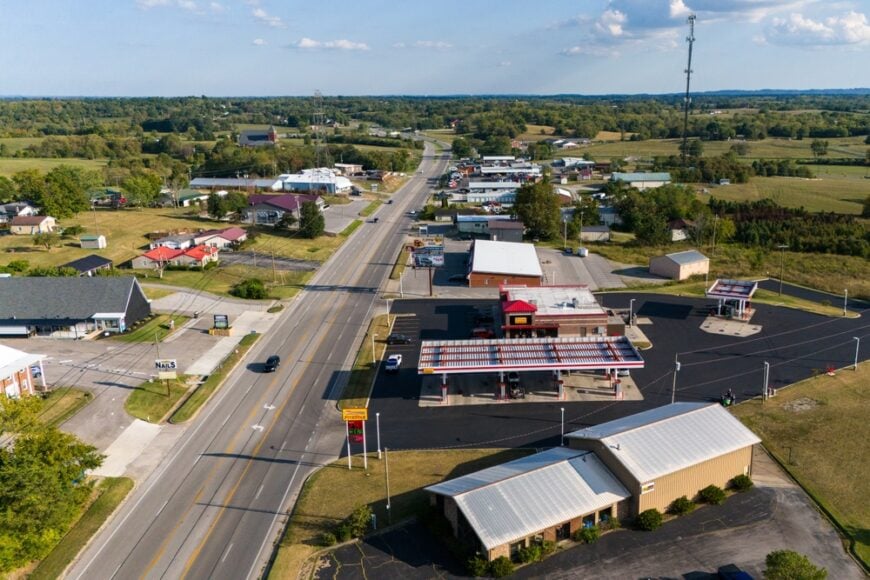
Founded in 1774, Harrodsburg predates Kentucky statehood, and its Shaker Village of Pleasant Hill lets visitors sleep in restored 19th-century dwellings after enjoying a three-course dinner featuring bourbon-poached peaches.
Nearby, the Beaumont Inn’s Old Owl Tavern pours an enviable lineup of vintage-dated Willett and Heaven Hill bottles—ask nicely and the bartender may share the story behind each dusty label.
Downtown’s Dedman Drugstore, now an ice-cream parlor, offers a “Boozy Bourbon Float” that blends homemade ale-8-one syrup with local small-batch bourbon and vanilla bean ice cream.
Wander the Old Fort Harrod State Park and you’ll spot interpreters demonstrating frontier-era distillation using copper pot stills no bigger than a milk pail. Fort Harrod Beef Festival partners with area distillers for bourbon-pairing dinners in open-air tents draped with Edison bulbs each fall.
It’s proof that the Commonwealth’s earliest settlement still writes new chapters in bourbon lore. For those seeking a home in Harrodsburg, 3-4 bedroom houses are priced between $200,000 and $350,000, making it an attractive destination for families looking to enjoy the local history.
Where is Harrodsburg?

Harrodsburg rests in Mercer County, about thirty miles southwest of Lexington, where U.S. 127 intersects KY-152. The town sits atop the same deep limestone shelf that nourishes both horses and mash bills, giving local water a mineral zip prized by distillers.
I like to take the Old Frankfort Pike to U.S. 127 for a drive past rolling pasture and hand-laid stone walls. Lexington’s airport is forty minutes northeast, while Bluegrass Scenic Railroad excursions from nearby Versailles make for a relaxing, car-free arrival on special event days.
7. Danville: Where Kentucky History and Bourbon Meet
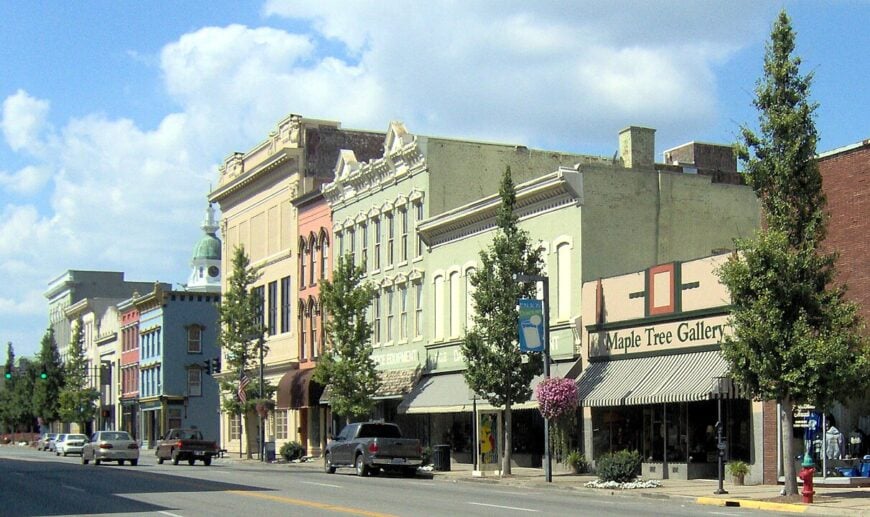
Danville calls itself the “City of Firsts,” Wilderness Trail Distillery embodies that spirit with a science-driven approach to sweet-mash fermentation you can taste in every sip of their Bottled-in-Bond bourbon.
Just off Main Street, Constitution Square Historic Site marks where Kentucky’s statehood papers were signed, and during Bourbon & Barbecue Fest each June, the lawn fills with smokers and barrel-aged sauces.
For a quieter outing, I sneak into the Norton Center for the Arts, whose intimate lobbies often host pop-up tastings from lesser-known craft distillers.
The Art Center of the Bluegrass sells pottery glazed with residue from spent mash—functional souvenirs that contain the spirit of the town. When evening falls, I grab a table at Copper & Oak for a flight that might include a private Wilderness Trail pick unavailable outside Boyle County.
Danville proves that innovation doesn’t have to erase history; they sip side by side here. In Danville, 3-4 bedroom homes are priced between $250,000 and $400,000, offering a mix of historical ambiance and modern living.
Where is Danville?
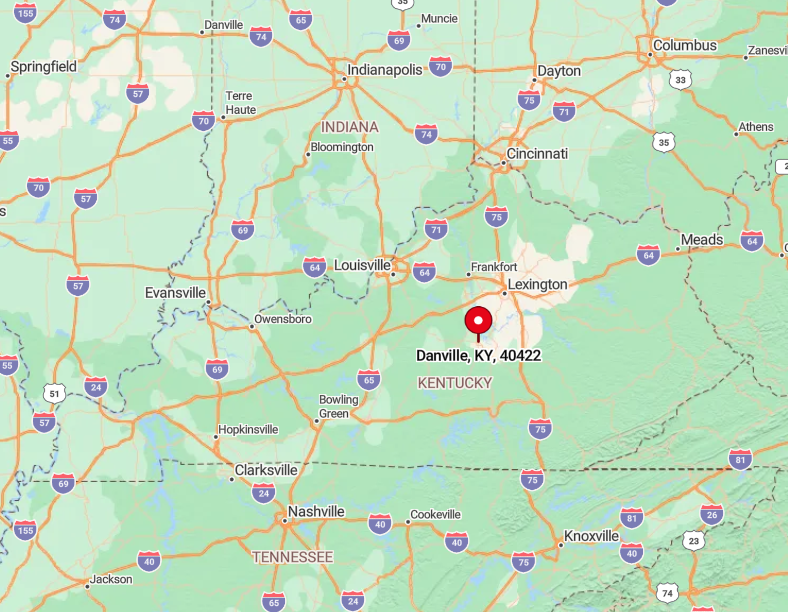
Danville anchors Boyle County at the junction of U.S. 150 and U.S. 127, roughly forty-five minutes south of Lexington amid gentle knobs and fertile river bottoms. The Dix River provides limestone-filtered water that once powered gristmills feeding frontier stills.
I usually approach via KY-34, a twisty route lined with wildflowers and grazing cattle. Blue Grass Airport in Lexington is the nearest commercial hub, though many visitors enjoy the scenic hour-plus drive from Louisville along the Bluegrass Parkway and KY-33.
6. Lebanon: A Historic Stop on the Bourbon Trail
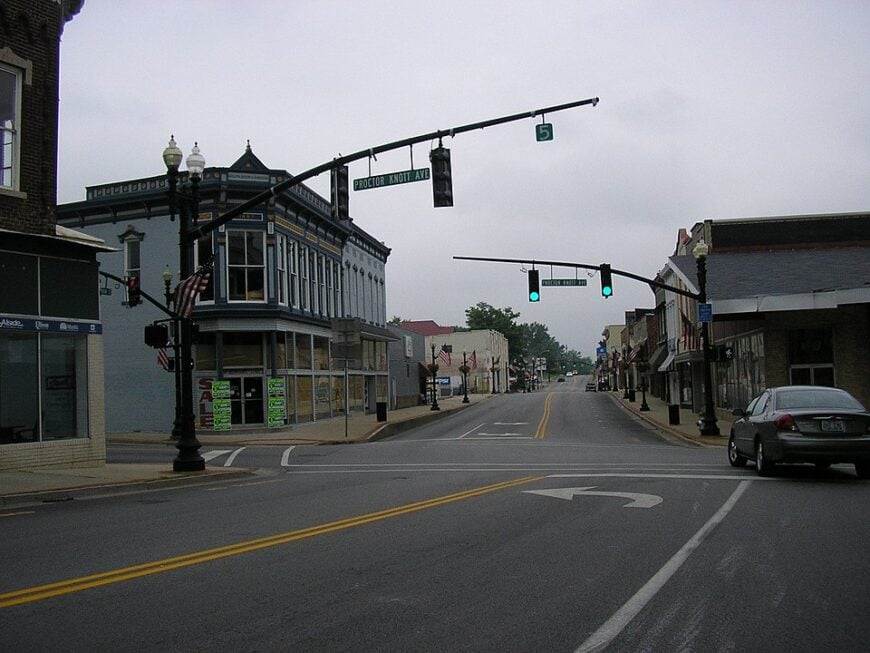
Lebanon’s claim to fame is Limestone Branch Distillery, where the Beam and Dant families collaborate on Yellowstone bourbon inside a facility that feels more like a country general store than a factory.
After the tour, I walk downtown to the Marion County Heritage Center, where exhibits trace the local mule-team whiskey trade that once rattled down every dirt lane. County natives swear by the fried baloney at Chasers Restaurant, best washed down with a flight of Minor Case Rye finished in sherry casks.
The town hosts Ham Days each September, pairing smoked country ham sliders with craft cocktails featuring house-infused bacon bourbon—surprisingly addictive. A block away, Henning’s Hilltop Winery produces a bourbon-barrel-aged blackberry wine that sells out every season.
Lebanon may be small, but its flavor radius is expansive. If you’re looking to settle in Lebanon, you’ll find 3-4 bedroom homes available between $200,000 and $350,000, offering a great blend of affordability and charm.
Where is Lebanon?
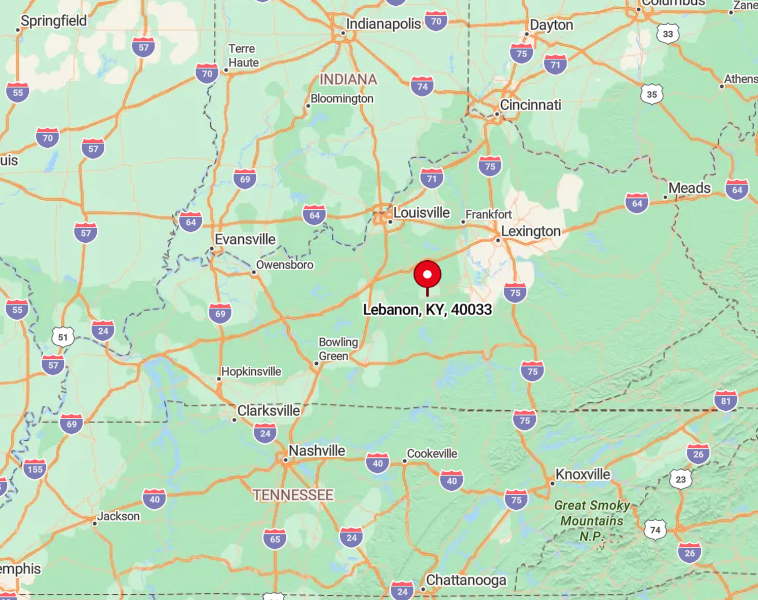
Lebanon sits in the geographic center of Kentucky along KY-68, roughly an hour from Lexington and Louisville. The Rolling Fork headwaters skirt town, providing the iron-free water early distillers coveted.
I usually cruise in via the scenic Bourbon Trail route that links Loretto, Lebanon, and Danville, allowing several tasting stops in one leisurely loop. Louisville’s airport is the closest for flyers, though Lexington’s isn’t far, and rental-car roads remain blissfully traffic-free.
5. Clermont: The Birthplace of Jim Beam Bourbon
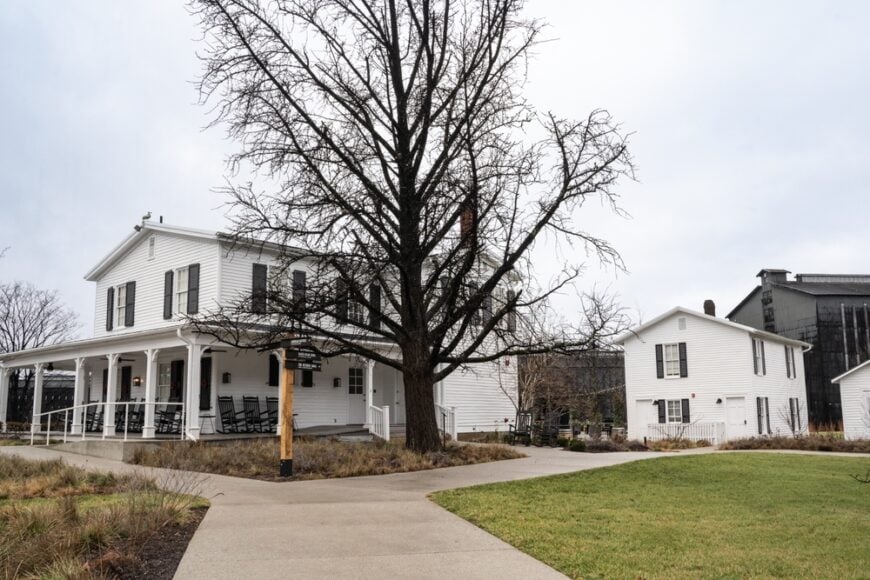
Clermont is synonymous with Jim Beam, and walking the American Stillhouse feels like touring a working museum where the aroma of yeast starters lingers in stairwells. Don’t miss the behind-the-scenes Booker Noe Craft Tour—guides often draw straight from experimental barrels not yet released.
Local haunt The Shack serves a bourbon burger glazed with Knob Creek reduction, a nod to Beam’s small-batch line distilled on-site. In October, the “Bourbon & Barns” festival transforms historic farm buildings into tasting stations illuminated by string lights and cornstalks.
Clermont shows how the world’s best-selling bourbon can still feel downright neighborly. Clermont’s 3-4 bedroom homes typically range from $250,000 to $400,000, making it a desirable choice for those wanting to explore the area’s rich heritage.
Where is Clermont?
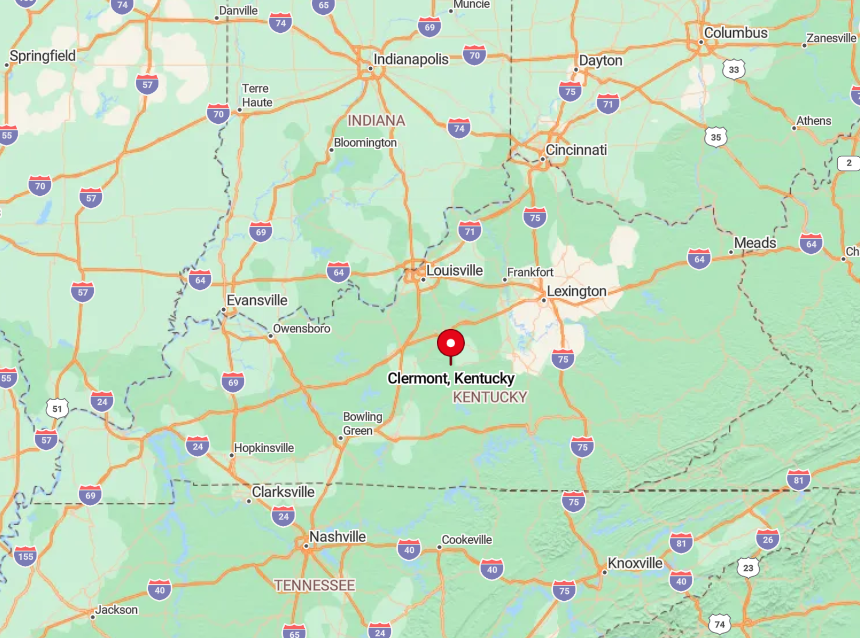
Clermont lies in northern Bullitt County, just off I-65, about thirty miles south of Louisville, making it one of the most accessible bourbon stops in the state. The distillery campus spreads across both sides of KY-245, framed by forested knobs that funnel cool air into the rickhouses for ideal aging.
I suggest exiting at KY-245 and following the brown bourbon-trail signs; you’ll smell fermenting mash before you see the black-streaked warehouses. Louisville’s airport sits a swift thirty-minute drive away, while Bardstown is twenty minutes southeast, perfect for a two-stop day.
4. Versailles: Bourbon Trails Amidst Rolling Hills
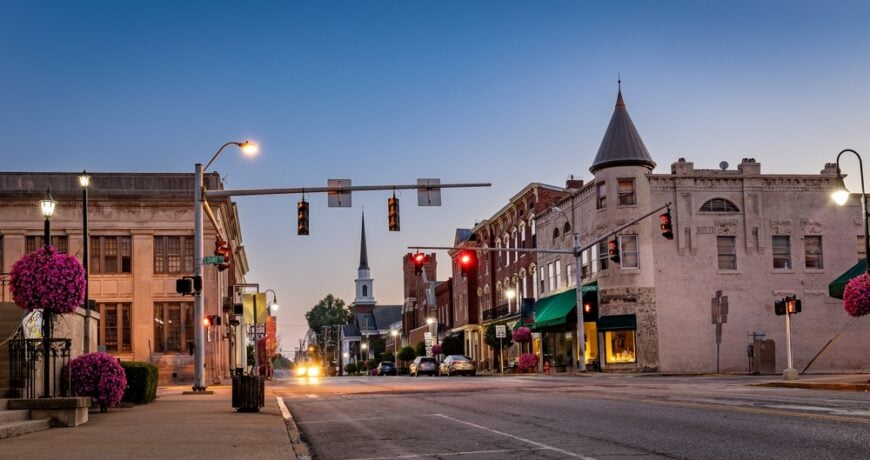
Versailles (pronounced “Ver-SAYLES” by locals) occupies postcard country, where Woodford Reserve’s stone-walled distillery looks more like a horse estate than a spirits factory.
I adore the “Corn to Cork” tour that carts guests by trolley past historic cypress fermenters and a 500-foot gravity-fed barrel run. Nearby, Castle & Key has resurrected Colonel Taylor’s 1887 castle distillery, complete with botanical gin tastings under a restored sunken garden pergola—bring a camera.
If time allows, a picnic at Falling Springs Park pairs well with a bottle from Glenns Creek Distilling, tucked inside an old Beam facility you might miss without GPS. Downtown’s Amsden Bourbon Bar occupies a 19th-century bank vault and serves espresso martinis spiked with bourbon cream for a decadent pick-me-up.
Versailles proves that thoroughbreds and thoroughbred bourbon share the same bluegrass pastures in Kentucky. Versailles presents 3-4 bedroom homes for sale between $300,000 and $450,000, allowing homebuyers to enjoy the town’s historical and cultural significance.
Where is Versailles?
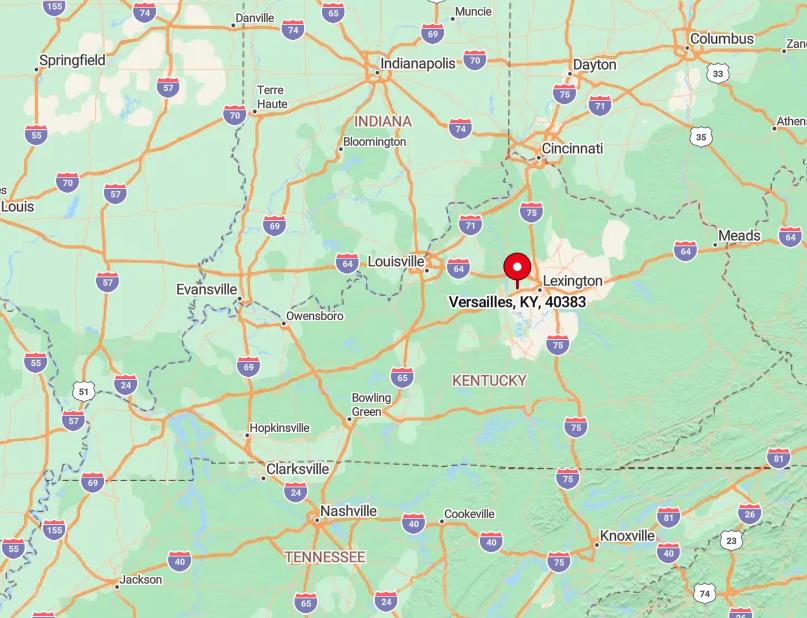
Versailles anchors Woodford County just fifteen minutes west of Lexington via U.S. 60, nestled among world-famous horse farms. The gently rolling Inner Bluegrass terrain provides perfect drainage and mineral-rich grasses that influence equine champions and local whiskey’s flavor.
I often arrive via Old Frankfort Pike, a National Scenic Byway lined with stacked-stone fences and gnarled bur oaks. Lexington’s Blue Grass Airport is a quick ten-minute drive, making Versailles an effortless first stop after wheels down.
3. Lawrenceburg: Where Heritage Meets Kentucky Spirit
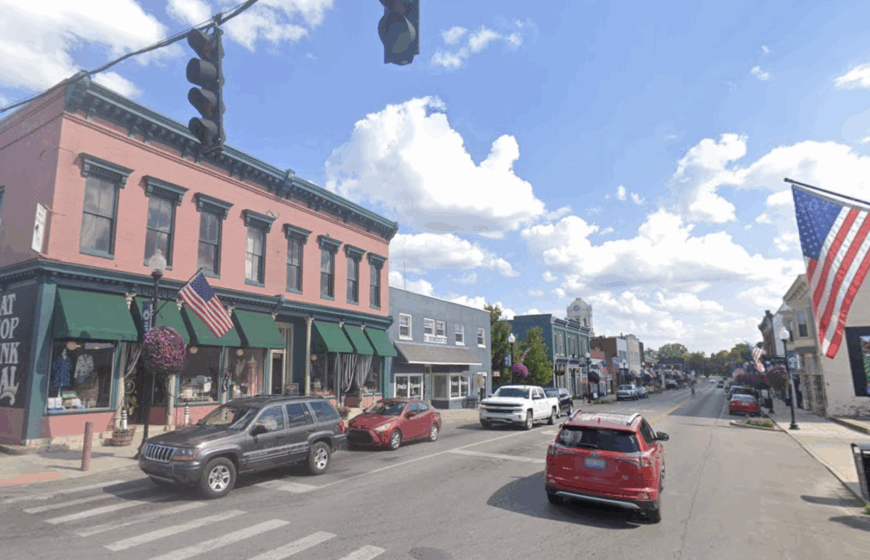
Lawrenceburg’s skyline is crowned by Wild Turkey’s rickhouses perched high above the Kentucky River Palisades, and the view from the visitor center deck might be the prettiest in bourbon country. Inside, Master Distiller Jimmy Russell still roams the halls, and catching him for an autograph feels like meeting bourbon royalty.
Four Roses’ Spanish Mission-style distillery just across town offers a contrasting aesthetic and a Single-Barrel Select tasting that showcases the brand’s ten unique yeast recipes.
Downtown’s Rising Sons Home Farm treats guests to cocktails made with their own small-batch whiskey and homegrown berries—farm-to-glass at its finest. If you’re adventurous, book a kayaking tour through the Palisades, where limestone cliffs tower above still waters that once floated flatboats laden with bourbon barrels.
Lawrenceburg embodies both tradition and innovation in one neat pour. Lawrenceburg’s 3-4 bedroom homes are priced between $250,000 and $400,000, providing a perfect mix of small-town charm and historic character.
Where is Lawrenceburg?
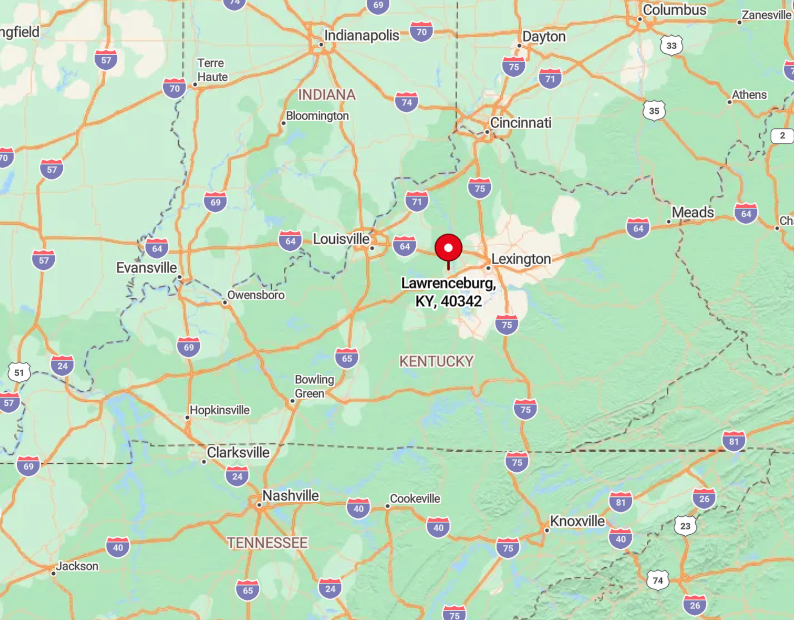
Lawrenceburg sits in Anderson County along U.S. 127, about thirty minutes west of Lexington and the same distance east of Louisville’s outer suburbs. The town overlooks the Kentucky River gorge, whose steep limestone walls create a natural climate distillers prize for aging.
I usually arrive via the Bluegrass Parkway, exiting at KY-44 for a scenic descent into town. Lexington’s airport remains the easiest flight option, though some visitors fly into Louisville and enjoy the pastoral drive down KY-151.
2. Loretto: Home of the Iconic Maker’s Mark Distillery
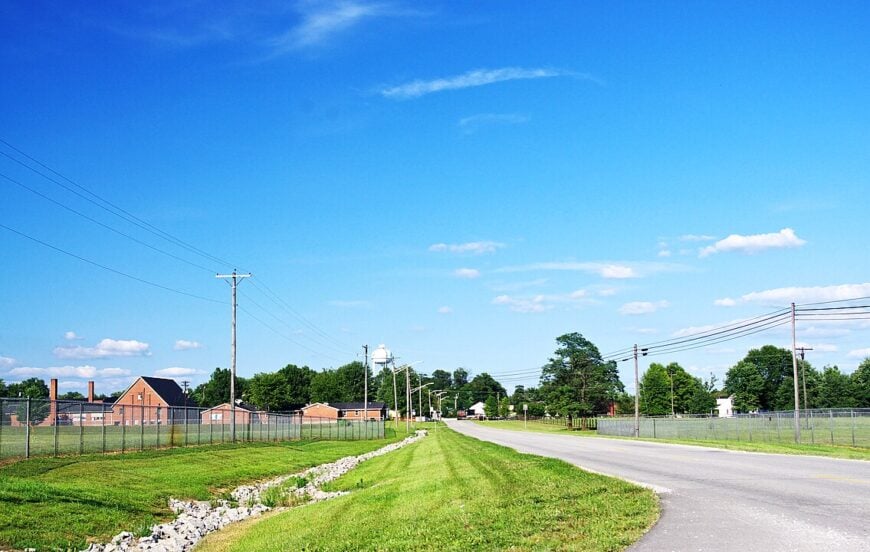
Loretto may be tiny, but it houses one of bourbon’s most recognizable brands—Maker’s Mark—where visitors hand-dip their bottles in that signature red wax, a ritual I never skip.
The distillery’s campus feels like a folk-art village, with Chihuly glass installations glowing inside century-old rackhouses and the new Star Hill Provisions restaurant serving bourbon-smoked trout pulled from local streams.
I also recommend a side trip to Hardin’s Creek, where a hidden spring once powered frontier stills; locals occasionally organize small-group tastings beside its calm waters. Each December, the “Lights at Maker’s” event decorates the property in thousands of bulbs, reflecting off aging warehouses like fireflies on the hillside.
Loretto proves that artistry and whiskey share the same creative spark. Loretto offers a variety of 3-4 bedroom homes, with prices ranging from $250,000 to $400,000, ideal for those interested in exploring the local bourbon culture.
Where is Loretto?
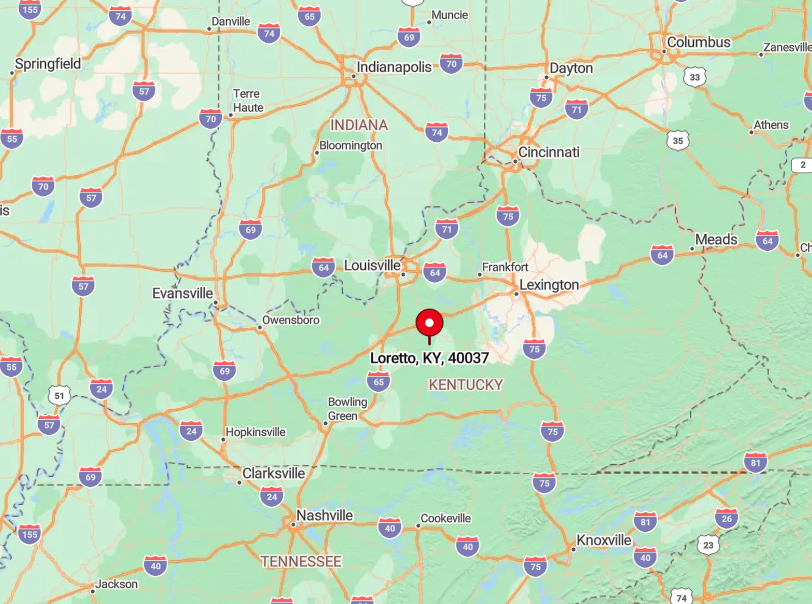
Loretto sits in rural Marion County, about twenty minutes south of Bardstown via KY-49, surrounded by rolling knobs and tobacco barns. The distillery draws limestone-filtered water from a spring-fed lake on site, demonstrating the importance of geography in every sip.
I usually approach along the narrow, tree-tunneled Station Road, a drive that feels like slipping through a secret passage. Louisville and Lexington airports are about an hour and a half away, so renting a car is essential for this scenic detour.
1. Bardstown: The Bourbon Capital with Historic Charm
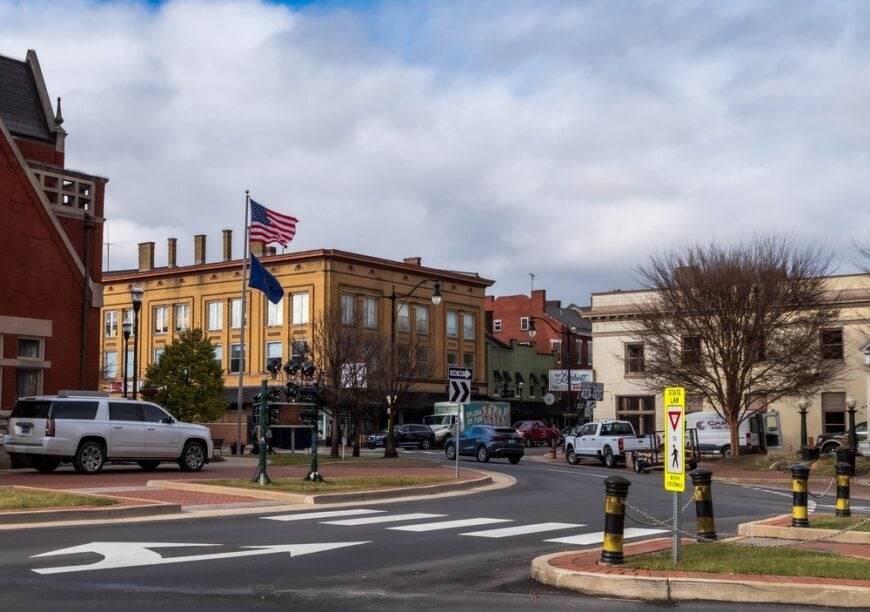
Bardstown earns its “Bourbon Capital of the World” nickname with more than a dozen distilleries within thirty miles, including Heaven Hill’s Bourbon Heritage Center, where I’ve sampled pre-fire Elijah Craig older than I am.
Downtown’s Federal-style homes line streets that once hosted stagecoaches hauling whiskey to New Orleans, and the Old Talbott Tavern still serves drinks beneath bullet holes allegedly left by Jesse James.
The Oscar Getz Museum of Whiskey History houses curiosities like medicinal Prohibition bottles and a 1790 copper pot barely larger than a milk jug. Bardstown Bourbon Company’s sleek glass facility offers restaurant-caliber pairings such as seared scallops with a toasted-barrel high-rye pour.
Each September, the Kentucky Bourbon Festival turns the courthouse lawn into a carnival of master‐class tastings, live cooperage demos, and rare-bottle auctions that quiver my credit card.
Bardstown is where bourbon’s past, present, and future share one long, convivial bar. Bardstown, often called the “Bourbon Capital of the World,” offers 3-4 bedroom homes ranging from $250,000 to $400,000, providing a perfect base for bourbon enthusiasts and history lovers.
Where is Bardstown?
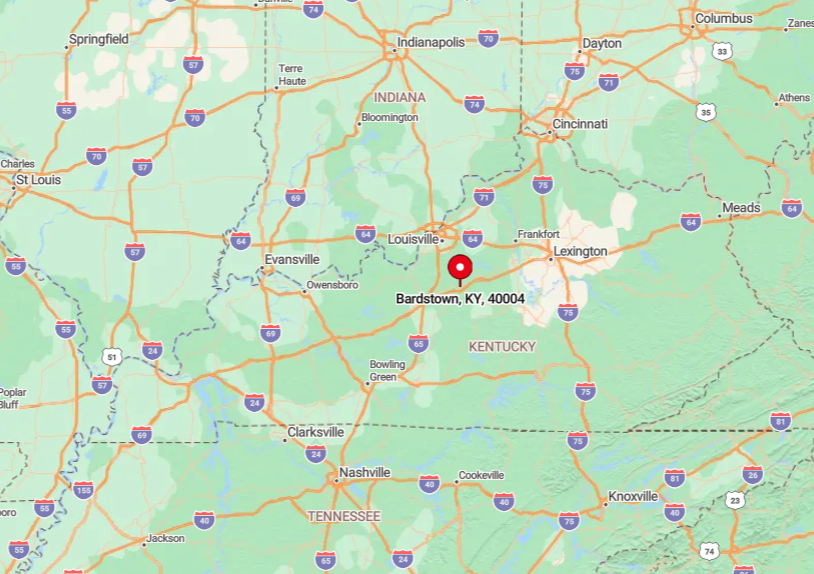
Bardstown anchors Nelson County at the crossroads of U.S. 150 and KY-245, roughly forty-five minutes south of Louisville and an hour west of Lexington. Nestled among low knobs and cedar groves, the town sits atop the same limestone aquifer that flavors many of its resident spirits.
I like to take the Bluegrass Parkway to Exit 25, then roll past rickhouses that rise like cathedrals along the horizon. Louisville’s airport lies the closest, but many visitors pair Bardstown with a scenic drive down from Lexington, collecting distillery stamps.

